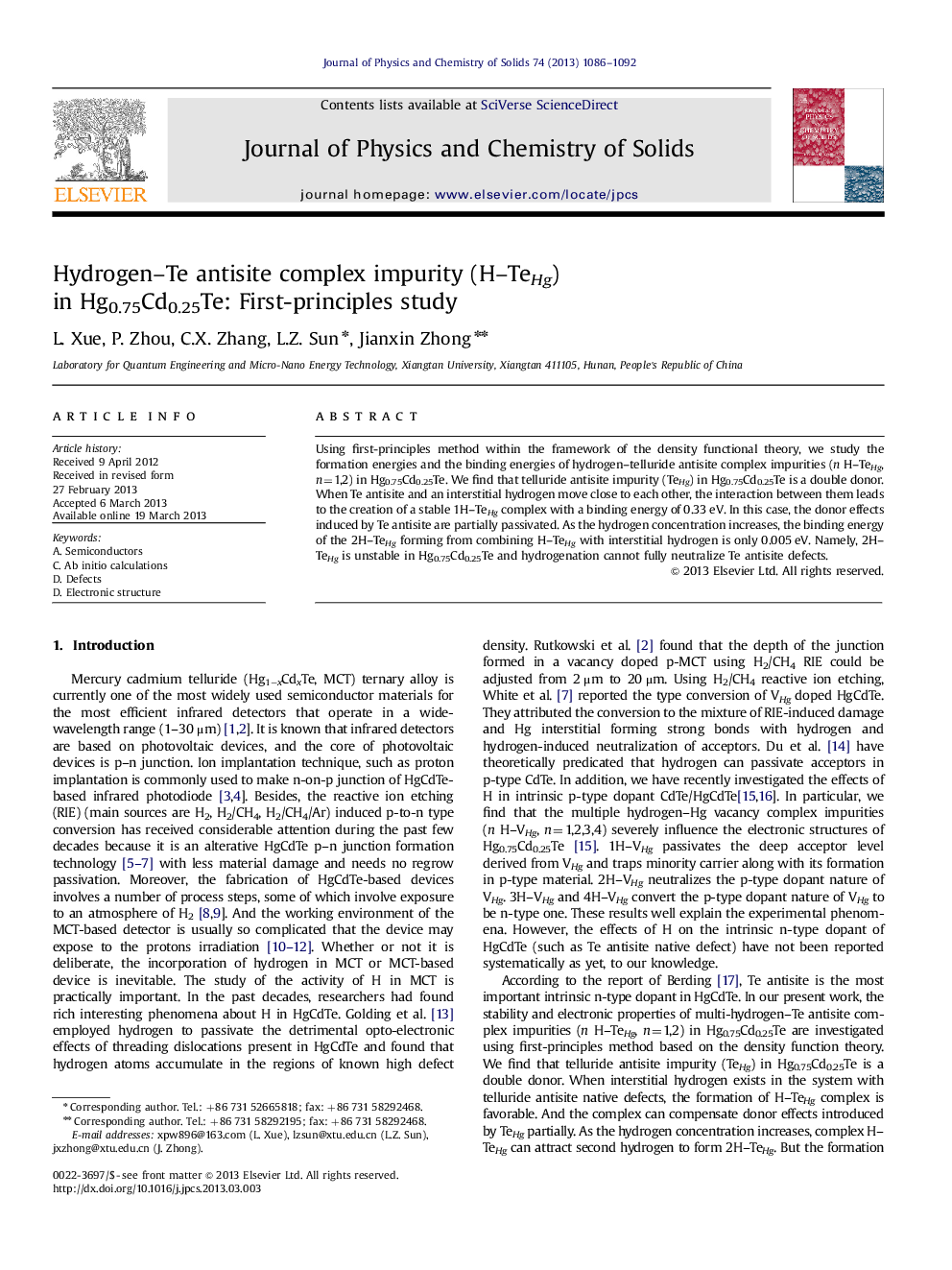| Article ID | Journal | Published Year | Pages | File Type |
|---|---|---|---|---|
| 1516103 | Journal of Physics and Chemistry of Solids | 2013 | 7 Pages |
••The formation of H–TeHg in Hg0.75Cd0.25Te is easy.••H–TeHg complex defect compensates the donor of TeHg partly.••The formation of 2H–TeHg is difficult.••2H–TeHg cannot neutralize the donor levels of TeHg
Using first-principles method within the framework of the density functional theory, we study the formation energies and the binding energies of hydrogen–telluride antisite complex impurities (n H–TeHg, n=1,2) in Hg0.75Cd0.25Te. We find that telluride antisite impurity (TeHg) in Hg0.75Cd0.25Te is a double donor. When Te antisite and an interstitial hydrogen move close to each other, the interaction between them leads to the creation of a stable 1H–TeHg complex with a binding energy of 0.33 eV. In this case, the donor effects induced by Te antisite are partially passivated. As the hydrogen concentration increases, the binding energy of the 2H–TeHg forming from combining H–TeHg with interstitial hydrogen is only 0.005 eV. Namely, 2H–TeHg is unstable in Hg0.75Cd0.25Te and hydrogenation cannot fully neutralize Te antisite defects.
Graphical abstractFigure optionsDownload full-size imageDownload as PowerPoint slide
